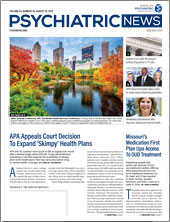Two major Trump administration efforts to lower prescription drug prices collapsed last month, leaving President Donald Trump under intense pressure to deliver on a key campaign promise.
First, a federal judge blocked a rule requiring drugmakers to display retail drug prices in TV ads. Next, the administration withdrew a proposed plan to bar the widespread practice of drugmakers giving rebates to insurance plans that encourage the use of certain medications.
The Trump administration is now left examining other, less politically palatable proposals, including allowing states to import lower-priced drugs from Canada or other countries. Other ideas being floated on Capitol Hill include giving Medicare Part D plans more ability to negotiate with drugmakers or to cap drug prices.
Court’s Ad Ruling a Win for Drugmakers
Three drugmakers—Merck & Co., Eli Lilly, and Amgen—and the National Association of Advertisers sued after the Trump administration issued a rule in May requiring that TV ads for prescription drugs display monthly list prices. The plaintiffs argued that Congress did not grant the Department of Health and Human Services (HHS) the power to regulate drug marketing and that the rule compels speech in a manner that violates the First Amendment.
The rule, which had been slated to take effect July 9, required drugmakers to disclose the price for a one-month course of treatment in TV ads for drugs covered by Medicare or Medicaid (
Psychiatric News). The rule was aimed at improving price transparency for consumers and targeting “wasteful and abusive increases” in drug prices, according to the rule. HHS Secretary Alex Azar called it, at the time, “the single most significant step any administration has taken toward” price transparency.
U.S. District Judge Amit Mehta for the U.S. District Court for the District of Columbia sided with drugmakers, writing July 8 that HHS exceeded its statutory authority in regulating TV drug ads. Judge Mehta noted that the policy of requiring the disclosures “very well could be an effective tool in halting the rising cost of prescription drugs,” but “no matter how vexing the problem of spiraling drug costs may be, HHS cannot do more than what Congress has authorized.”
The Pharmaceutical Research and Manufacturers of America (PhRMA), which represents drug manufacturers, praised the ruling. It said that including list prices in direct-to-consumer TV ads could have discouraged patients from seeking needed medical care, wrote Nicole Longo, PhRMA’s director of public affairs, in an email to Psychiatric News. “List prices are not a good indicator of what a patient will pay … and do not reflect the substantial discounts and rebates negotiated by insurers and pharmacy benefit managers.”
HHS Drops Plan to Ban Drug Rebates
Two days after the court ruling, the administration backed off a separate proposal to end the widespread practice of drugmakers giving rebates to insurance plans or pharmacy benefit managers. HHS issued the proposal in January, calling the rebates “backdoor deals” that amount to 26% to 30% of a drug’s list price.
APA filed comments on the controversial proposal in April, expressing concern about “unintended consequences” that could result, such as additional use of step therapy and increases in prior authorizations or formulary restrictions (
Psychiatric News). “These tools increase provider burden while reducing patient access to critical, life-saving mental health and substance use disorder medications,” APA wrote in formal comments.
The proposal was expected to raise monthly premiums for Medicare Part D enrollees by as much as 22% a month, just before a presidential election. Analysts had also raised the concern that there was nothing in the rule that would compel drug manufacturers to pass along any savings directly to consumers. ■
The U.S. District Court decision is posted
here. APA’s letter on medication rebates is posted
here.

